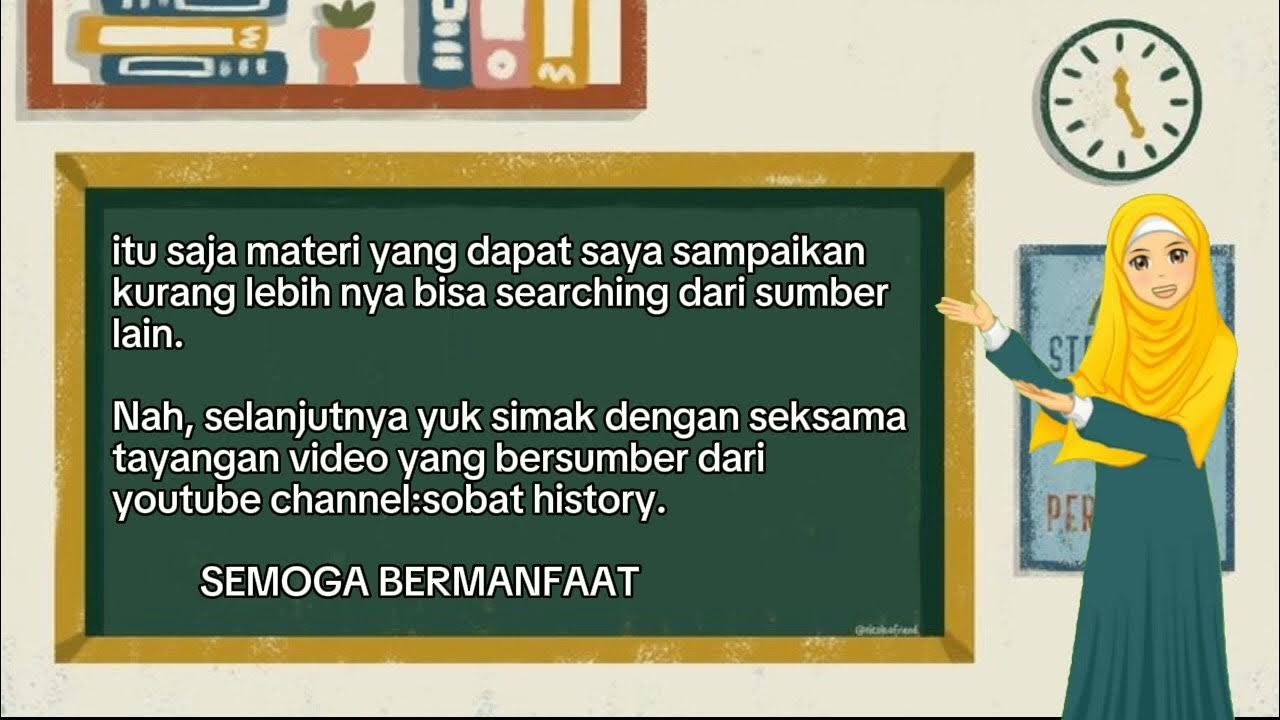How was Indonesia colonized by the Dutch?
Summary
TLDRIn 1949, the Dutch government recognized Indonesia's independence, ending 350 years of colonial rule. The video explores how the small Dutch Republic established control over a vast and diverse archipelago. It details the Dutch East India Company's (VOC) formation, its monopoly on trade, and territorial expansion. The script also covers the VOC's conflicts with the Portuguese, Spanish, and English, leading to its dominance in the region. However, the company's profits dwindled due to wars and piracy, and it went bankrupt in 1799. Despite this, Dutch rule persisted until Indonesia declared independence in 1945, which was recognized by the Netherlands in 1949.
Takeaways
- 📆 The Dutch recognized Indonesia's independence in 1949, ending 350 years of colonial rule.
- 🚢 The Dutch Republic's naval strength enabled it to challenge Spanish and Portuguese colonial holdings.
- 🌍 The Dutch East India Company (VOC) was established in 1602 to monopolize trade in Asia and secure Dutch interests.
- 💰 The VOC's initial expeditions to Indonesia resulted in high profits, encouraging further colonization efforts.
- 🛡️ The Dutch used military force to establish and maintain control over key trading ports and territories in Indonesia.
- 🌿 The spice trade was a significant economic driver for Dutch colonization, with spices like nutmeg and cloves being highly valued.
- 🏰 The VOC established fortresses and factories in strategic locations to control the flow of trade and resources.
- 🤝 Local rulers were often engaged through treaties, allowing the Dutch to establish a presence and exert influence.
- 🌐 The VOC's operations faced competition and conflict with other European powers, particularly the English East India Company.
- 🏙️ Batavia (now Jakarta) was founded as the VOC's headquarters in the East, symbolizing Dutch control over the region.
Q & A
What significant event occurred in 1949 regarding Indonesia and the Dutch government?
-In 1949, the Dutch government finally recognized the independence of its former colony of Indonesia, ending 350 years of Dutch rule.
How did the Dutch Republic manage to control a colony almost 50 times its size?
-The Dutch Republic, despite its small size, was able to control Indonesia through a combination of naval strength, strategic alliances, and the establishment of the Dutch East India Company (VOC), which had a monopoly on trade and the power to establish forts and armed forces.
What was the purpose of Cornelius de Houtman's expedition to the Indonesian archipelago?
-Cornelius de Houtman's expedition aimed to gather information about the archipelago and explore trade prospects, particularly in the lucrative spice trade.
What was the outcome of the first Dutch expedition to Indonesia in terms of trade?
-The first Dutch expedition resulted in a treaty with the island kings of Bali, allowing the Dutch to purchase peppercorn. Although the purchase was small, it covered the costs of the entire expedition.
Why was the Dutch East India Company (VOC) established?
-The VOC was established to regulate the lucrative trade, gain supremacy in the Asian trading sphere, and to counter competition and hostilities from other European powers like the Portuguese, Spanish, and English.
What was the significance of the treaty concluded with the ruler of Amboyna in 1600?
-The treaty with the ruler of Amboyna allowed the Dutch to establish a fortress, Castel van Vere, and guaranteed the delivery of all the nutmeg produced on the island, setting a blueprint for further Dutch dealings with the natives and marking the beginning of Dutch colonization of Indonesia.
How did the Dutch East India Company's strategy evolve to maintain and expand its trade?
-The VOC's strategy evolved to include territorial expansion, the expulsion of other European powers like the Spanish, Portuguese, and English, and the monopolization of the spice trade, recognizing it as a matter of national security.
What was the outcome of the conflict between the Dutch and the local ruler of Jakarta?
-After a four-month-long siege, the Dutch, led by Jan Pieterszoon Coen, defeated the besieging forces, destroyed Jakarta, and founded a new city, Batavia, which became the headquarters of the VOC in the East.
How did the Dutch East India Company's position change after the 18th century?
-The VOC's position began to decline in the second half of the 18th century due to the maintenance costs of forts and armed forces, piracy, and wars with Great Britain. It went bankrupt after the French conquest of the mainland Netherlands in 1795 and was dissolved in 1799.
What was the role of the Dutch in Indonesia during World War II and the period leading to Indonesia's independence?
-During World War II, Indonesia was occupied by Japan. After Japan's defeat, Indonesia declared independence in 1945, and the Dutch recognized this independence in 1949, ending their rule over the archipelago.
Outlines

Этот раздел доступен только подписчикам платных тарифов. Пожалуйста, перейдите на платный тариф для доступа.
Перейти на платный тарифMindmap

Этот раздел доступен только подписчикам платных тарифов. Пожалуйста, перейдите на платный тариф для доступа.
Перейти на платный тарифKeywords

Этот раздел доступен только подписчикам платных тарифов. Пожалуйста, перейдите на платный тариф для доступа.
Перейти на платный тарифHighlights

Этот раздел доступен только подписчикам платных тарифов. Пожалуйста, перейдите на платный тариф для доступа.
Перейти на платный тарифTranscripts

Этот раздел доступен только подписчикам платных тарифов. Пожалуйста, перейдите на платный тариф для доступа.
Перейти на платный тарифПосмотреть больше похожих видео
5.0 / 5 (0 votes)






